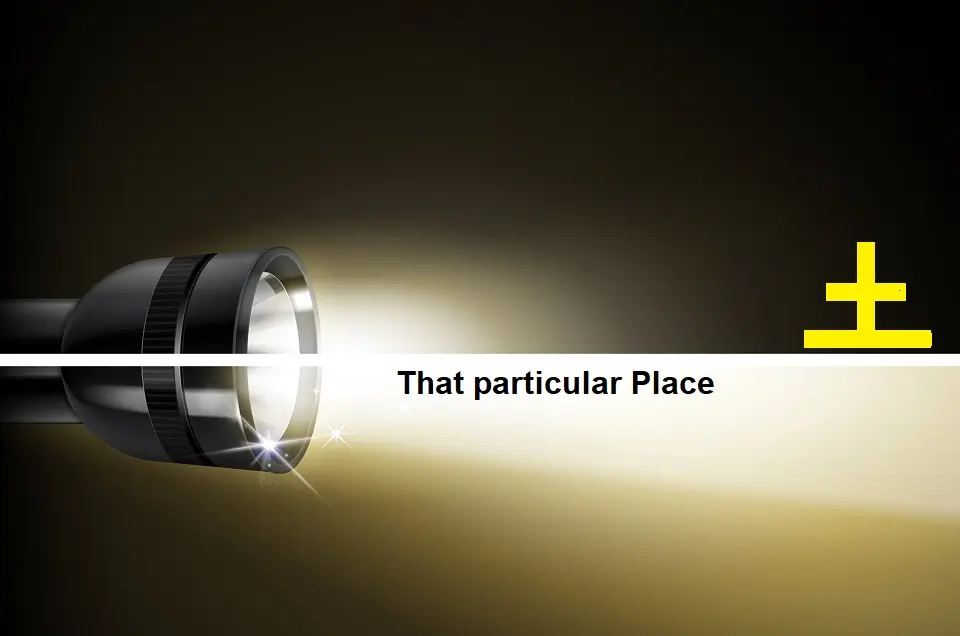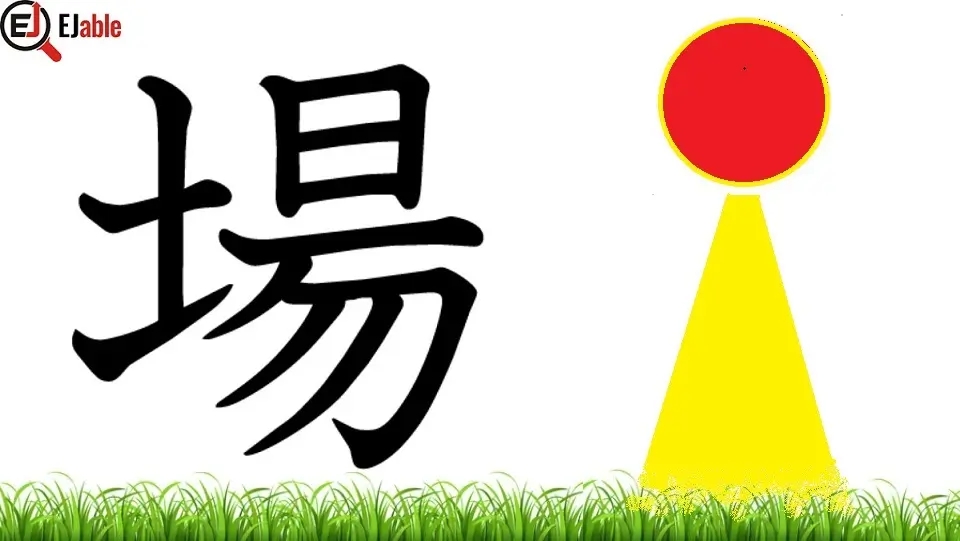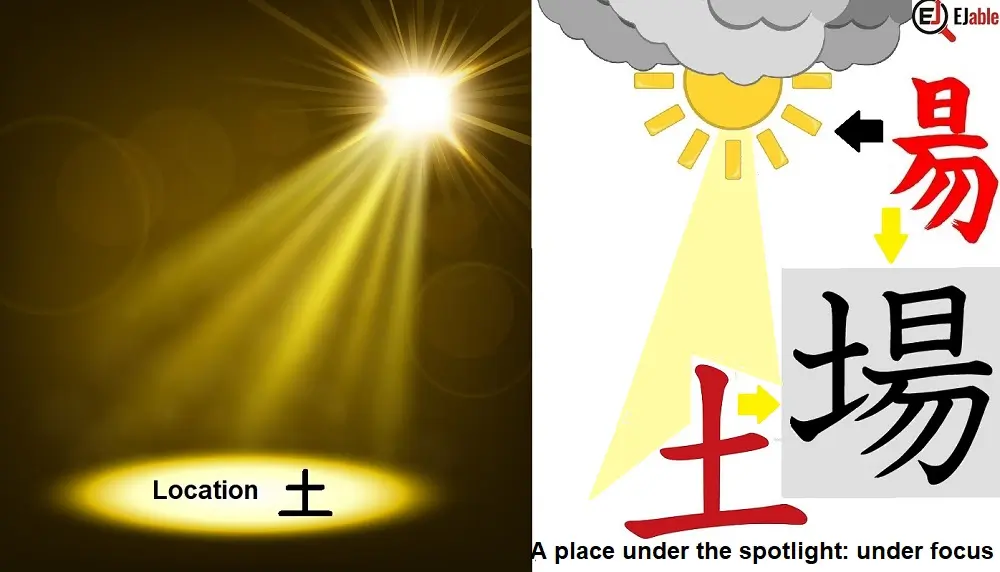Kanji for Place or Location: 場 (Ba or jō)

The Japanese kanji for “Place” or “Location” is 場. The Kunyomi or the Japanese pronunciation of the Kanji 場 is Ba (ば), and the Onyomi (Chinese) pronunciation is jō (ジョウ).
Originally, the Kanji 場 represented an “earthen platform” or “earthen ground,” which was a flat place where people gathered for various activities.
The Kanji 場, meaning a place or location, is constructed with 12 strokes. This Kanji is a part of the JLPT N4 syllabus (please check the list of JLPT N4 kanji). In Japanese schools, this Kanji is taught in grade 2.
Origin of the Shape 場
This Kanji 場 originally signified a flat area or open field, indicated by 土 (earth or ground), that was exposed to the sunlight (indicated by 日). Over time, this idea of an open, public place evolved into a more general concept of a “place” or “location,” which is how the Kanji 場 is often used in modern Japanese.
The other use of Kanji 場 to denote a specific situation or circumstance also finds its root in its meaning of location. Instead of a “specific place” denoting a physical location, this case denotes a specific situation.
Mnemonic: How to Remember the Kanji of Place or Location (場)


As we saw above, the Kanji 場 represents a specific place or location to consider a specific area on the ground under a spotlight.
The best way to remember the 場 Kanji of the Sun is to imagine a big Sun (日) over the ground or earth (土), with sunrays coming down as a spotlight to highlight a specific location on the earth.
A potential mnemonic to remember this could be: “The sun (日) shines over the earth (土) in this place (場).” The following picture represents the above logic visually to help you memorize the 場 Kanji easily and unforgettably:


Explanation of the mnemonic technique to remember 場 from the above picture:
- The top right-hand side of the above picture shows the sun (日). Consider the lower part of the character 昜 as the sun rays coming down.
- On the left-hand side, the Kanji for fat (土) represents that the sun’s rays are acting as a spotlight to highlight a specific location on the earth or ground.
Use of Kanji for “Place” 場 in Compound Words
The Kanji for location or place frequently appears in compounded Japanese words’ kanjis. There are 55 Japanese words that begin with the Kanji 場, and it appears in 717 words. Here are some compounded words using the kanji of 場 to Denote a specific place:
- 場所 (basho): Location, place.
- 駐車場 (chuushajou): Parking lot.
- 会場 (kaijou): Meeting place, venue.
- 劇場 (gekijou): Theater.
- 舞台 (butai): Stage (as in a theater).
- 市場 (ichiba): Market.
- 広場 (hiroba): Plaza, public square.
- 現場 (genba): Scene (of an incident), site (of work).
- 運動場 (undoujou): Sports field, playground.
- 球場 (kyuujou): Baseball stadium.
場 to Denote a Situation Instead of Physical Location (Place)
While the Kanji 場 is most often used in the context of physical locations or venues, in some compounds, it can refer more symbolically to a situation or circumstance. Here are some examples:
- 場合 (bāi): Case or situation. 場合は 【ばあいは】 means “in the event of” or “in the case that” (something happens)
- 戦場 (senjou): Battlefield. While this can refer to an actual location, it is also often used to describe a situation of intense conflict or competition, such as in business.
- 恋愛場 (ren’aiba): Love situation. A context or situation where romantic feelings are involved.
- 場面 (bamen): Scene, situation. This term often refers to a particular point in a sequence of events or a particular situation.
- 現場猫 (genba neko): Site cat. This phrase refers to a cat living in a particular place (like a construction site) and supervising or dominating the site as if it were its own.
- 現場責任 (genba sekinin): Site responsibility. This refers to the responsibility for what happens at a certain place, often in a work context.
All these examples extend the core concept of the Kanji 場 as a “place” or “location” to more abstract situations or contexts.
Do check other Kanji characters on the page “How to Remember Kanji“.


A long-term ex-pat in Japan, Himanshu comes with an IT background in SAP consulting, IT Business Development, and then running the country operations of an IT consulting multinational. Himanshu is the co-founder and Managing Director of ReachExt K.K. and EJable.com. He is also an Advisory Board Member of a Silicon Valley AI/IoT startup.

